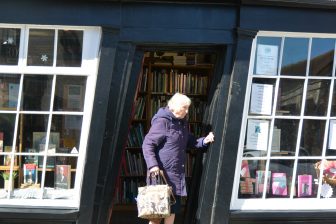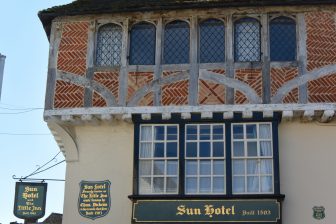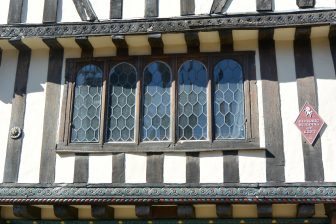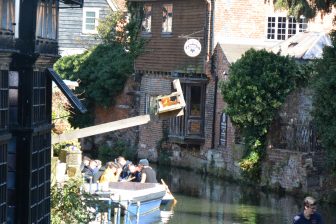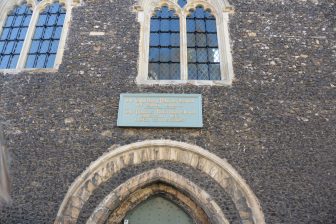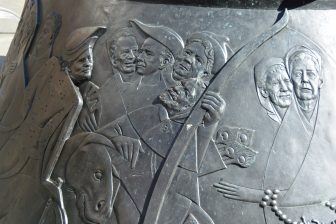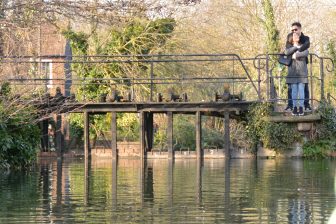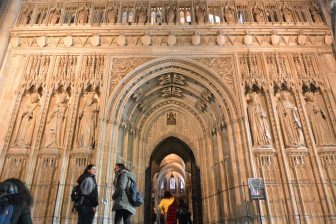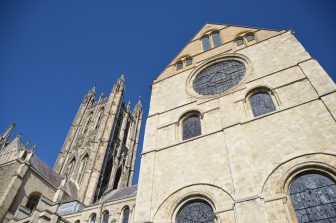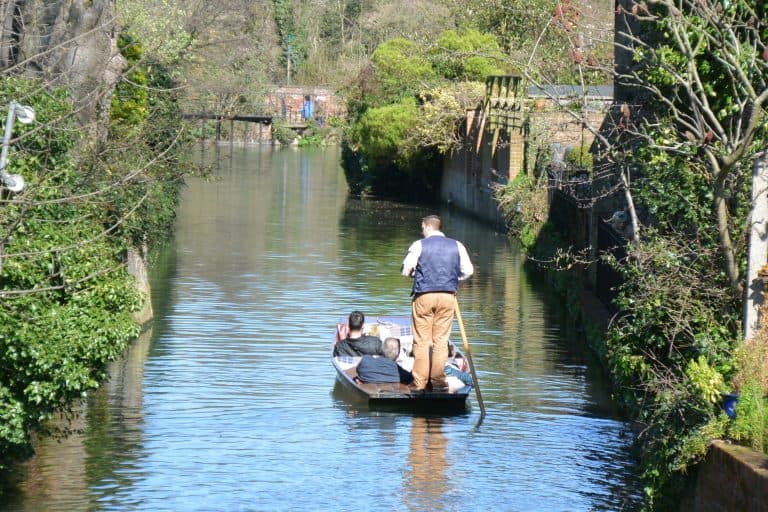
[ Mar.2019 ] During our walking tour in Canterbury in the south of England, after coming out from the Cathedral site, we walked in Palace Street.
The most noticeable thing here is a building so crooked that it is nearly falling down.
I do not know how it is balanced, but it is still functioning as a book shop and people were coming in and out.
It was apparently built in the 17th century.
On top of the entrance, there are golden words by Charles Dickens from 1849: “A very old house bulging out over the road, leaning forward trying to see who was passing on the narrow pavement below”.
According to our guide, Susie, a lot of historical buildings in Canterbury are used in ‘David Copperfield’, the novel by Charles Dickens, and she said “This may be one of them”.
It seemed that it was not clear if this house was in the novel, but certainly another house called ‘Little Inn’, which was seen from further down the road, appeared in this novel.
‘Little Inn’ was built in 1503 and currently it is a hotel called Sun Hotel.
The historical houses in Canterbury are marked with red plates and one of them had a little sun on the wall.
This little sun was a mark of insurance and it means that the houses with it were insured.
Another house had a lot of windows in a row on the top floor, though the windows downstairs were normal.
Apparently this was the weavers’ house.
They lived in the downstairs and worked in the bright upstairs.
One of the historical houses that Susie pointed out had a hole for cleaning the mud from their boots.
From the bridge over the River Stour, we could see a punt for tourists.
There was a kind of wooden chair sticking out over the river from a house.
This was a chair to judge if the suspect was a witch or not.
They made the suspect sit there and dropped the chair it to the river and if the woman died, she was not a witch, but if she survived she was.
That is terrible, as in any case, she had to die.
Near here, there is an old building called Eastbridge Hospital.
In the 12th century, this was a hostel where the pilgrims who became ill could stay.
Unfortunately it was closed on the day, but Susie said it is worth visiting.
According to her, the bell in this building rings only when something very important has happened.
She had wondered if it would ring for the Queen’s Jubilee Coronation, but it did not.
Instead, when the kidnapped Terry Waite was released from Lebanon, it rang apparently.
The last thing we saw in the tour was the statue of Chaucer, the author of ‘The Canterbury Tales’.
This statue was made in 2016 and he is dressed as a pilgrim.
The interesting thing is the people carved on the foundation.
They are all existing citizens of Canterbury and even the names are carved on the back.
This walking tour lasted about 90 minutes and there were many more things that we learned but these are the things that I now remember.
Every time we join this type of tour, we are really satisfied.

